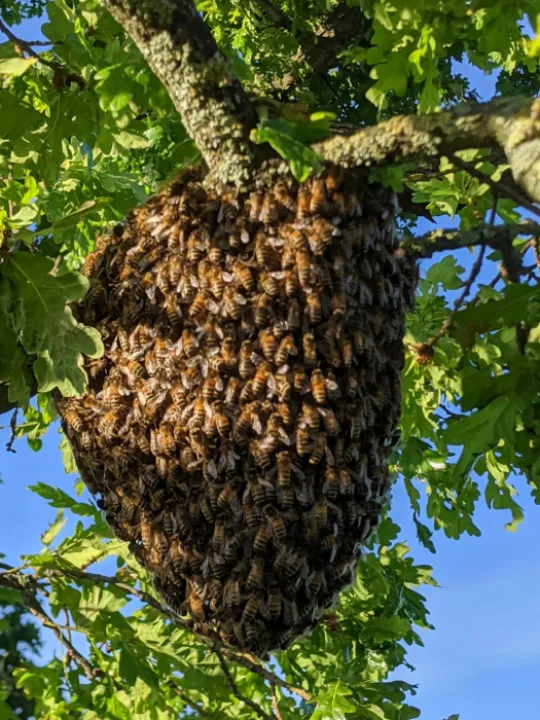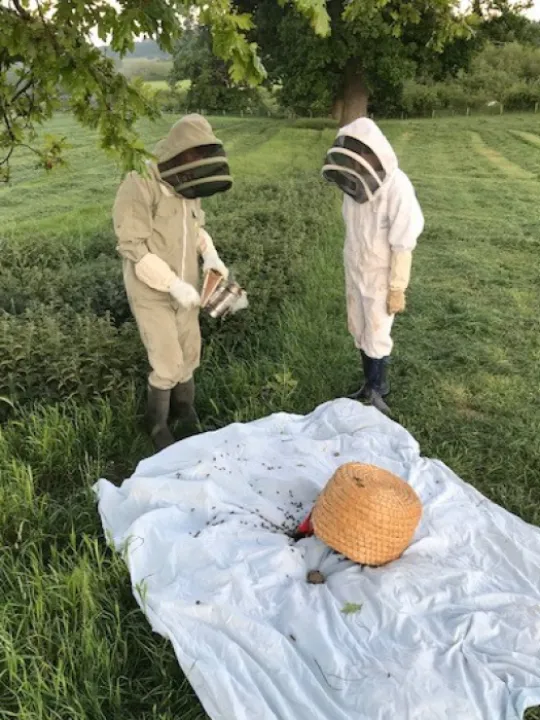Honey Bees on the Ridge
Having reported on 'World Bee Day' on 20 May, a colony of Honey Bees was spotted by members of Tattenhall Wildlife Group (TWiG) on Monday afternoon on the edge of The Sandstone Ridge.
Knowing nothing about swarm removal, the British Beekeepers Association was contacted and our local 'swarm catcher', Simon Nutall, together with his 12 year old son Nathan, immediately arrived from Peckforton.
Thankfully, the 'swarm collection' service has still been operative during the COVID-19 pandemic, accepting of guidance on social distancing.
Suitably attired in beekeeping suits with hooded veils and gauntlets and with all the necessary equipment of smokers to calm the bees, Simon and Nathan set about detaching the colony from a low hanging branch of an established oak tree.
This colony comprised approximately 20,000 Honey Bees (together with the Queen).
Once successfully enticed from the tree, the Honey Bees would then be rehoused in a local hive.
Honey bees are small in size and vary in colour from golden brown to almost black.
They live in sophisticated, well organised colonies.
This was a relatively small colony, since some can contain up to 60,000 bees which perform different roles for the success and smooth-running of the colony.
Honey bees usually swarm between April and July and visually resemble a ball, as captured in our photograph.
In the process of swarming, a single colony splits into two or more distinct colonies.
This is part of the natural process of reproduction as new homes are sought.
Keep looking out for Honey Bees (the perfect pollinators) on The Sandstone Ridge.
Photographs by kind permission of Andy Metcalfe.
Click on each image to enlarge

Sandstone Ridge Trust
Registered Company No. 7673603
Registered Charity No. 1144470
info@sandstoneridge.org.uk


